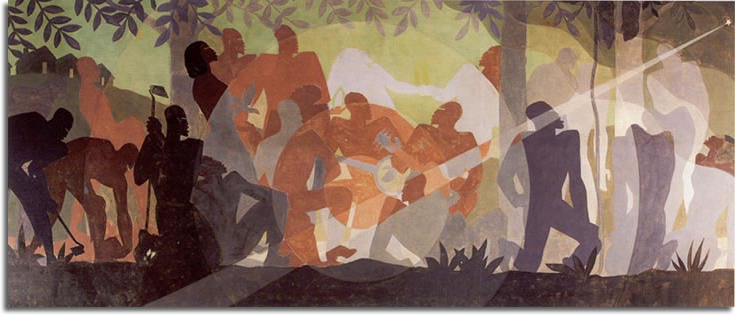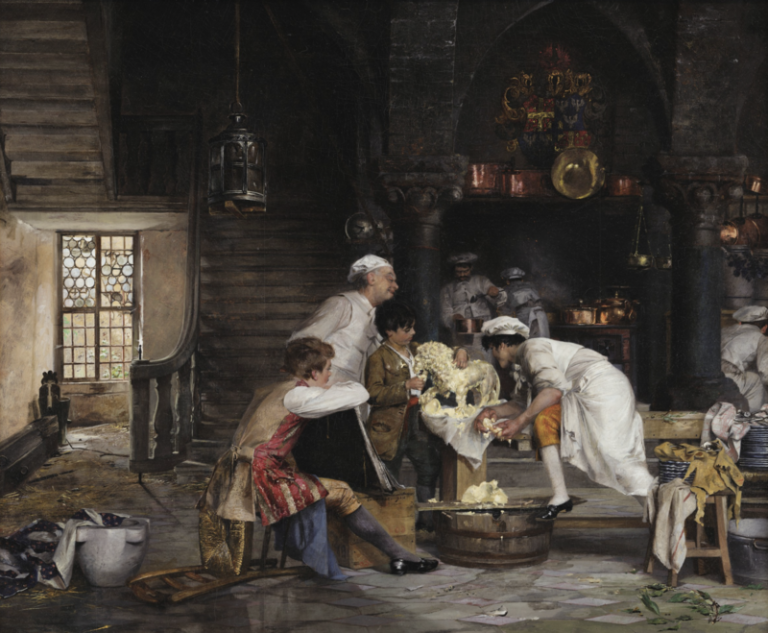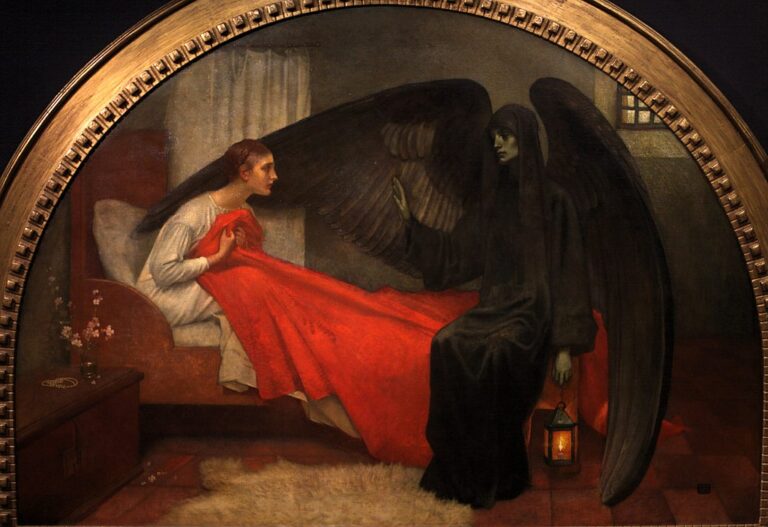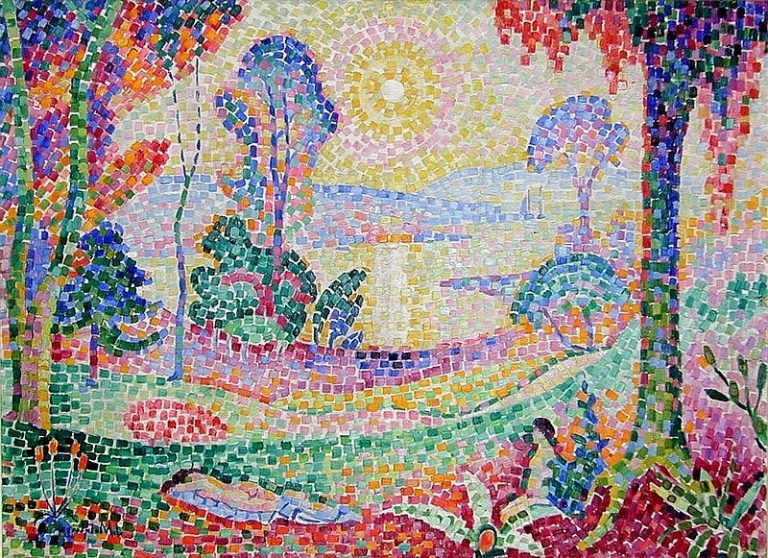Aaron Douglas Paintings: Influential Works of the Harlem Renaissance
Born: May 26, 1899, Kansas, United States
Death: February 2, 1979, Tennessee, United States
Art Movement: Harlem Renaissance
Nationality: American
Teacher: Winold Reiss
Institution: University of Nebraska and Detroit Museum of Art
Aaron Douglas Paintings: Influential Works of the Harlem Renaissance
Life and Education of Aaron Douglas
Aaron Douglas was a prominent African American artist known for his role in the Harlem Renaissance. Born in Topeka, Kansas, and pursuing higher education at Fisk University, his journey shaped his future contributions to the art world.
Early Years in Topeka, Kansas
Aaron Douglas was born on May 26, 1899, in Topeka, Kansas. He was raised by Aaron Douglas Sr., a baker, and Elizabeth Douglas, an amateur artist. His mother’s artistic talents inspired his early interest in art.
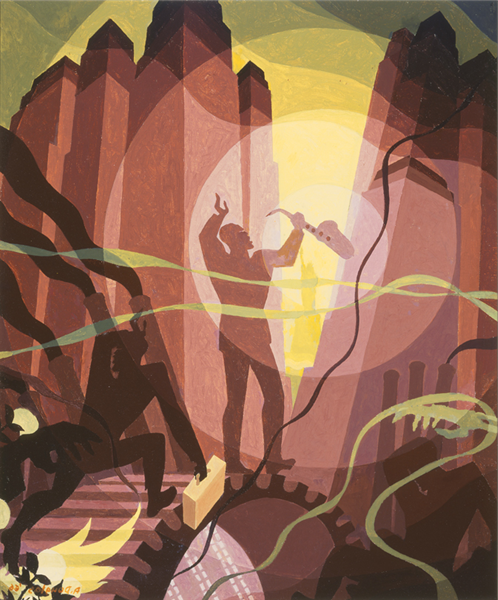
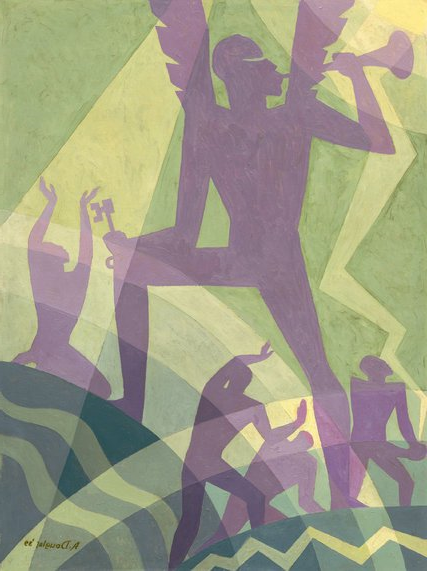
As a young boy, Aaron’s fascination with art was encouraged by his family. During his time at Topeka High School, where he graduated in 1917, he worked part-time at local businesses like Skinner’s Nursery and Union Pacific material yard. These years helped develop his determination and passion for art, driving him to seek further artistic education.
Academic Pursuits at Fisk University
After high school, Aaron Douglas attended the University of Nebraska. Later, he moved to Kansas City, Missouri, where he enrolled at Lincoln High School to gain teaching experience. In 1925, Douglas pursued his higher education in art by attending Fisk University, located in Nashville, Tennessee. Here, he obtained a Bachelor of Fine Arts degree.
His time at Fisk University was significant as he was involved with the Art Department and was surrounded by influential teachers and classmates. This period honed his skills and style, preparing him for his future impact as a key figure in the Harlem Renaissance.
Aaron Douglas and the Harlem Renaissance
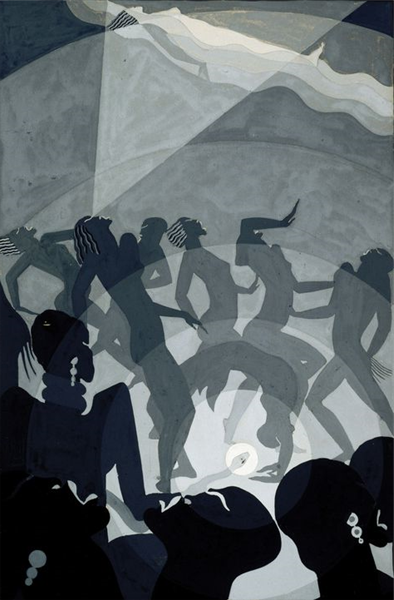
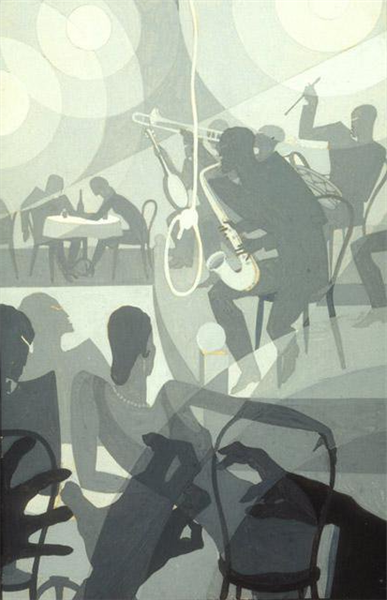
Aaron Douglas was a pivotal figure in the Harlem Renaissance, an art movement celebrating African American culture and identity. His work combined modern art forms with African themes, greatly influencing the era.
Influence of Alain Locke and Winold Reiss
Douglas drew inspiration from influential figures such as Alain Locke and Winold Reiss. Locke, known as the “Dean” of the Harlem Renaissance, encouraged African American artists to embrace their cultural heritage and produce distinctly African American work. This led Douglas to adopt African motifs in his art.
Winold Reiss, a German artist, introduced Douglas to innovative art techniques. Reiss’s work showcased a blend of art deco styles with vibrant colors and geometric shapes, which helped Douglas develop his unique style that resonated throughout the African American community. This blend of influences allowed Douglas to pioneer a new form of visual expression that became a hallmark of the Harlem Renaissance.
Contributions as a Muralist and Illustrator
Douglas’s contributions as a muralist and illustrator were significant. He created powerful murals that illustrated African American history and culture, notably for the 135th Street Branch of the New York Public Library. His work often highlighted themes of racial pride and social justice.

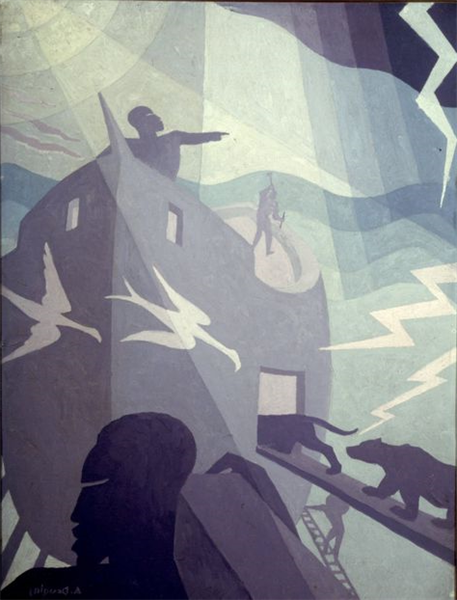
As an illustrator, Douglas provided artwork for publications like The Crisis, the official magazine of the NAACP, and the National Urban League’s Opportunity Magazine. His illustrations often included African-centric imagery and complemented the written pieces that advocated for the rights and dignity of African Americans. His visual storytelling played a vital role in communicating the ideals of the Harlem Renaissance to a broader audience.
The New Negro Movement
Douglas was a key artist in the New Negro Movement, which sought to redefine the African American experience. This movement was centered in Harlem and focused on showcasing the intellect and creativity of African Americans.
Through his art, Douglas depicted themes of empowerment, jazz, and the vibrancy of African life, which were central to this movement. His work aligned with the ideas expressed in Locke’s book, The New Negro, which aimed to change perceptions and celebrate African heritage.
By merging traditional African art with modernist influences, Douglas’s art not only represented the intellectual awakening of African Americans but also helped bring the rich cultural tapestry of Harlem to the national stage.
Significant Works and Artistic Style
Aaron Douglas’s paintings stand out for their unique blend of African heritage, modern art styles, and social commentary. He was a key figure in African American art during the 1920s and 1930s and greatly influenced the Harlem Renaissance movement.

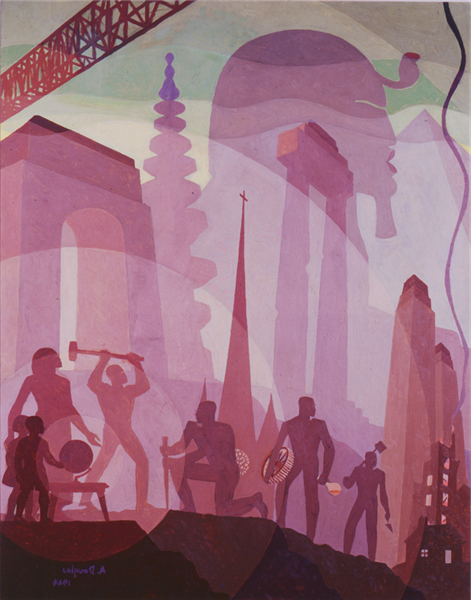
Aspects of Negro Life Series
The “Aspects of Negro Life” series is one of Aaron Douglas’s seminal works. This series consists of four murals created for the Works Progress Administration. They depict the journey of African Americans from slavery to the Harlem Renaissance.
Douglas uses African-centric imagery and themes to illustrate progress and cultural identity. Each mural employs a combination of historical figures and abstract representations. The series is memorable for its portrayal of social and racial issues and serves as a visual narrative of African American resilience and achievements.
Integration of African Art and Modernism
Douglas integrated elements of African art into his modernist works, linking cultural heritage with contemporary themes. His paintings blend traditional African symbols with practices from modern art, such as cubism and art deco, to create a dynamic and meaningful style.
He drew inspiration from Egyptian wall paintings, using their flat, elongated forms. This integration of styles offered a visual language that highlighted the African American experience. Douglas’s work was pivotal in creating art that resonated with pride and identity.
Use of Geometric Shapes and Bold Silhouettes
Geometric shapes and bold silhouettes are hallmarks of Douglas’s style. He often layered images, using sharp lines and contrasting tones, which created depth and movement within his paintings. These elements led to dynamic compositions that drew the viewer’s eye across the canvas.

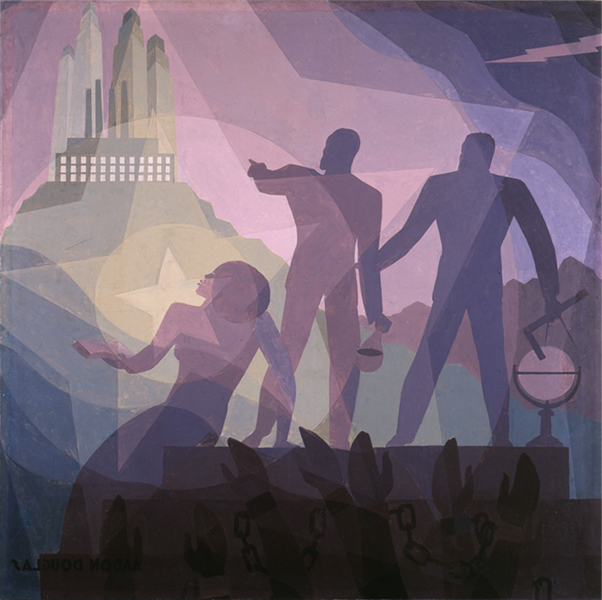
The silhouettes were more than mere stylistic choices. They often symbolized the struggle and strength of African American people. By merging strong geometric forms with art deco influences, Douglas pioneered a visual style that communicated both complexity and clarity.
Legacy and Influence on American Art
Aaron Douglas, a key figure of the Harlem Renaissance, had a lasting impact on American art. He inspired countless artists with his African-centric imagery and dedication to social justice. His work as a visual arts educator helped shape modern African-American art and brought attention to civil rights through his artistic contributions.
Teaching and Mentoring at Fisk University
Aaron Douglas played a significant role as a visual arts educator at Fisk University. As a teacher, he inspired young African-American artists to embrace their cultural heritage. Douglas used his experiences as a Harlem artist to guide his students.
He emphasized the importance of combining modern art techniques with African-centric imagery. This unique blend encouraged students to create works that reflected their personal identities and the African American experience. Douglas’s influence extended beyond his classroom as many of his students became prominent figures in the art world.
By mentoring the next generation, Douglas ensured that the legacy of African-American visual art continued to grow and evolve. His impact at Fisk University demonstrated his commitment to fostering a new wave of artists who would contribute to American art.
Contributions to Civil Rights and Social Issues
Aaron Douglas’s artwork tackled social issues and contributed to the civil rights movement. His murals and paintings often depicted themes of racial identity and social justice. He used African motifs and stylized forms to express the struggles and triumphs of the African American community.
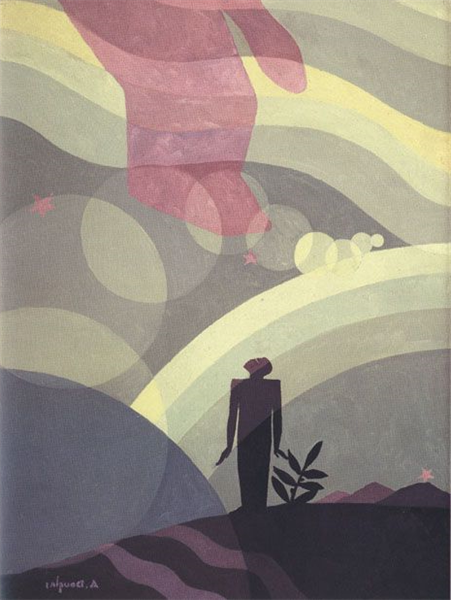
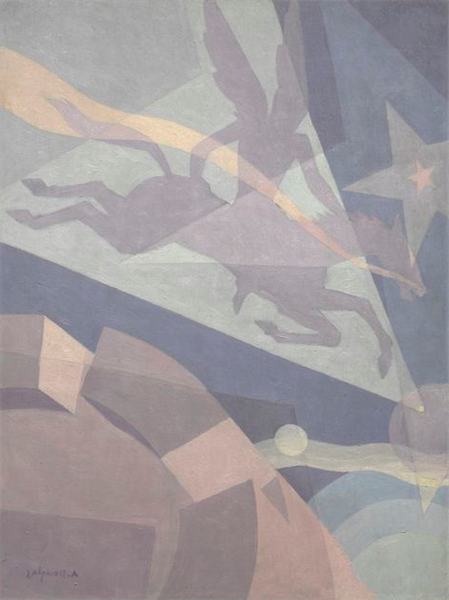
Douglas was an active member of the Harlem Artists Guild. The Guild aimed to support African-American artists and address social injustices. His participation underscored his dedication to social issues, making him a pivotal figure in the artistic advocacy for civil rights.
Through his art, Douglas not only portrayed the challenges faced by African Americans but also celebrated their resilience and cultural heritage. His contributions to civil rights and social issues are remembered as a vital part of his artistic legacy.
Frequently Asked Questions
Aaron Douglas was a pivotal figure in the Harlem Renaissance, whose paintings displayed themes from African American history and culture. His unique style blended African motifs with modernist artistry, influencing future generations.
What are the meanings behind Aaron Douglas’s paintings?
Aaron Douglas’s paintings often explore themes of African heritage and cultural progression. He used symbols and motifs to convey messages about racial identity and pride. His work typically combined traditional elements with modern styles to illustrate the complexities of African American experiences.
How did ‘Let My People Go’ reflect Aaron Douglas’s perspectives?
‘Let My People Go’ showcased Douglas’s views on emancipation and freedom. The painting depicted biblical themes intertwined with African American struggles. It underscored the desire for liberation and equality, reflecting his deep commitment to civil rights.
What contributions did Aaron Douglas make to the Harlem Renaissance?
Douglas was a leading figure in the Harlem Renaissance, a cultural movement that celebrated African American creativity. He contributed through art that emphasized racial pride and historical themes. His work helped to reshape perceptions and encouraged a new, empowered identity among African Americans.
Which Aaron Douglas artwork is considered his most iconic?
One of Aaron Douglas’s most iconic artworks is arguably “Aspiration.” Created in 1936, this painting is celebrated for its powerful imagery, illustrating the journey from slavery to freedom and progress. It captures the essence of hope and determination central to Douglas’s body of work.
In what ways did Aaron Douglas’s style contribute to African American visual arts?
Douglas’s style was revolutionary, merging African design with modernist approaches. His use of silhouetted figures and geometric shapes became a signature. This style not only highlighted African American stories but also inspired future artists to explore cultural identity in their work.
Where can one view Aaron Douglas’s art today?
Aaron Douglas’s art can be viewed in various galleries and museums across the United States. Significant collections are housed at the Howard University Gallery of Art and the Schomburg Center for Research in Black Culture. These places offer the public access to his influential legacy.

